Do you want to learn about the common types of bats in Ohio?
Searching for information about the common types of bats in Ohio was not as easy thing as I thought. The information I found was not as comprehensive, sometimes too complex, and sometimes just not relevant to Ohio or surrounding areas.
That is why I created Common Types of Bats in Ohio.
With over 1400 species of bats in the world, you’re bound to your favorite bat for Ohio or surrounding areas.
You will not only learn to identify common types of bats in Ohio, but also whether they are poisonous to humans or not, and the interesting facts about them.
10 Common Types of Bats in Ohio
#1. Big Brown Bats (Eptesicus fuscus)
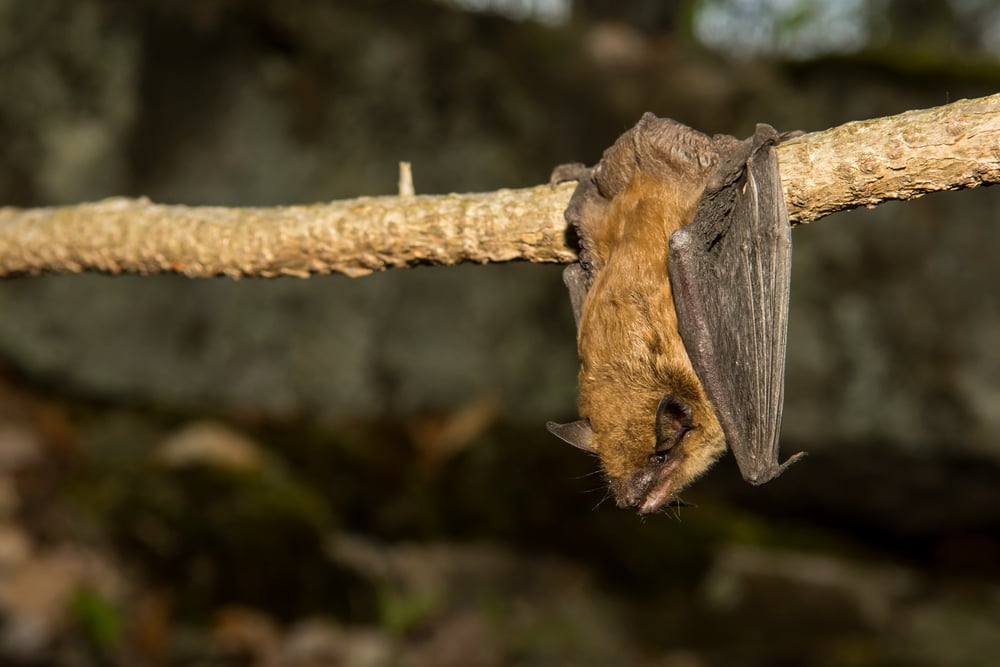
Identifying Characteristics and Facts
- They are nocturnal and are the fastest species of bats.
- 5 inches body length and 13 inches wingspan. They have short tails and large ears.
- Light brown or reddish-brown upper parts with a pale underside.
- Feeds on various insects such as mosquitoes and beetles.
- Usually dwell in caves, buildings, or trees.
- Social and they can make up large colonies.
The big brown bat is easy to identify with their long oily fur and unique coloration. They have light to dark brown colors that contrast well with black color on the wing membranes and on the muscle ears.
These bats are the most common species not only in Ohio but throughout the United States. They are medium in size and have a body size length of about 5 inches, and a wingspan is about 13 inches.
Another important thing you will note with these bats is the unique characteristic of having a short tail and large ears and their nocturnal nature. They are incredibly important in helping to control pest and insect populations.
#2. Indiana Bat (Myotis sodalist)
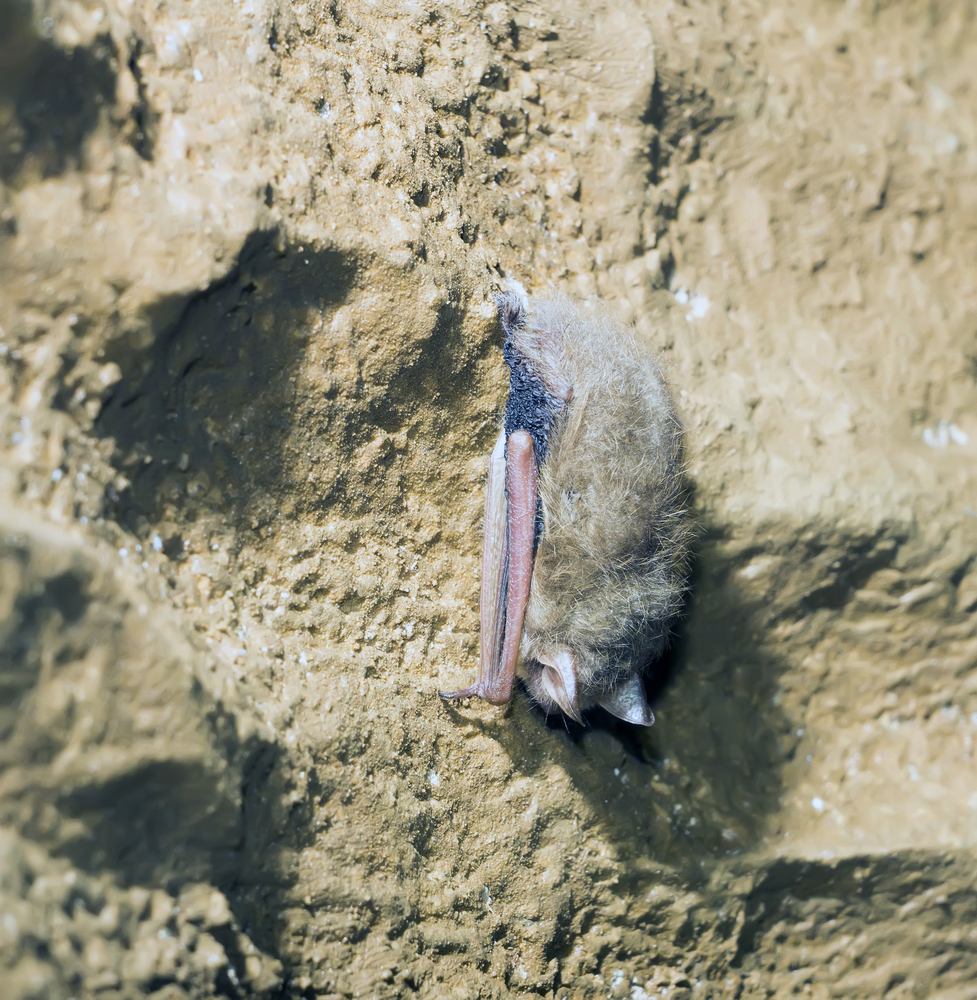
Identifying Characteristics and Facts
- Large in body size and range from 73 – 100 mm or 2.9 to 3.9 inches.
- Females’ body size ranges from 3 – 3.8 inches.
- They have dull grayish chestnut fur on their bodies.
- Generally dark-gray to grayish brown.
- Prefer to stay in forested to semi-open, and also riparian habitats.
- Mostly roost in tree hollows and caves.
This is another common type of bat in Ohio. It is a unique bat with interesting facts and behavior. You may not easily see them though they are common in this area since they mostly live in hardwood and pine forests.
An interesting fact about the Indiana Bat is that they usually hibernate during the winter season. In addition to that, they form maternal colonies since they are social.
When it comes to their diet, Indiana bats usually feed on moths and other insects. And just like most other bats, they are important in helping to control the insect populations and also reduce pests that are harmful.
#3. Silver-Haired Bat (Lasionycteris noctivagans)
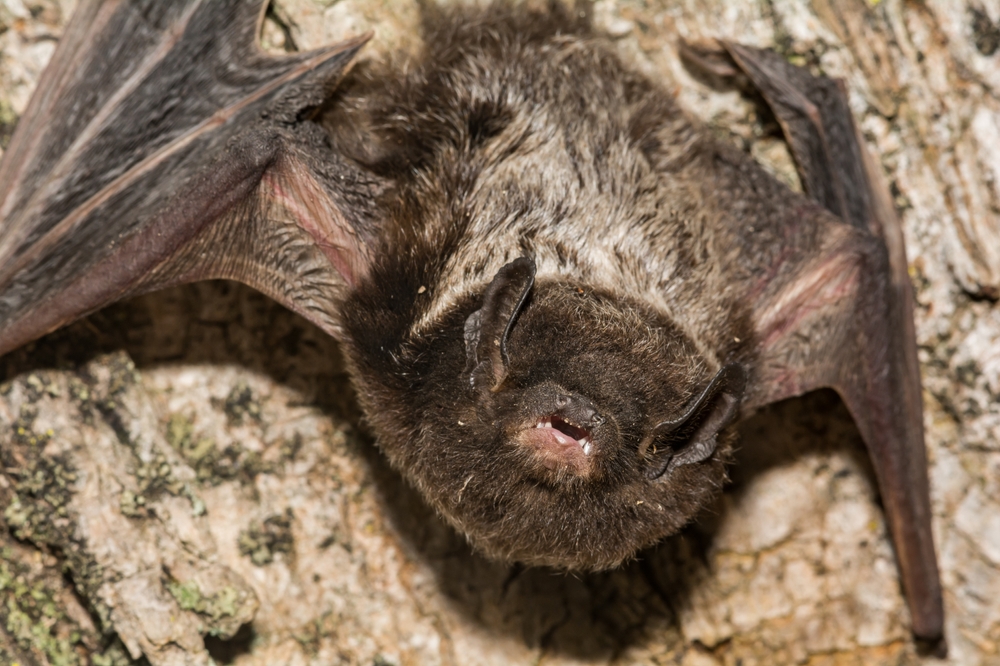
Identifying Characteristics and Facts
- They usually migrate and hibernate during winter.
- They prefer to stay mostly in the forested habitats.
- About 100 mm length including the tail which is 40 mm long.
- Has black silver-tipped fur that gives it a frosted silvery look.
- Active during dawn and dusk and may also remain active throughout the night.
- Mainly eat flies such as mosquitoes and also moths among other insects.
Silver-haired bats are one of the most common types of bats in Ohio and surrounding areas.
These bats are silver in appearance and they are active during dusk and dawn. These bats may also be active the whole night and you can easily identify them from their looks.
When it comes to silver-haired bats’ behavior the best way to describe it is strange. The males and the female bats separate during summer, and when the fall comes, they migrate in search of hibernating grounds and that is when they swarm and come together again.
#4. Gray Bat (Myotis grisescens)
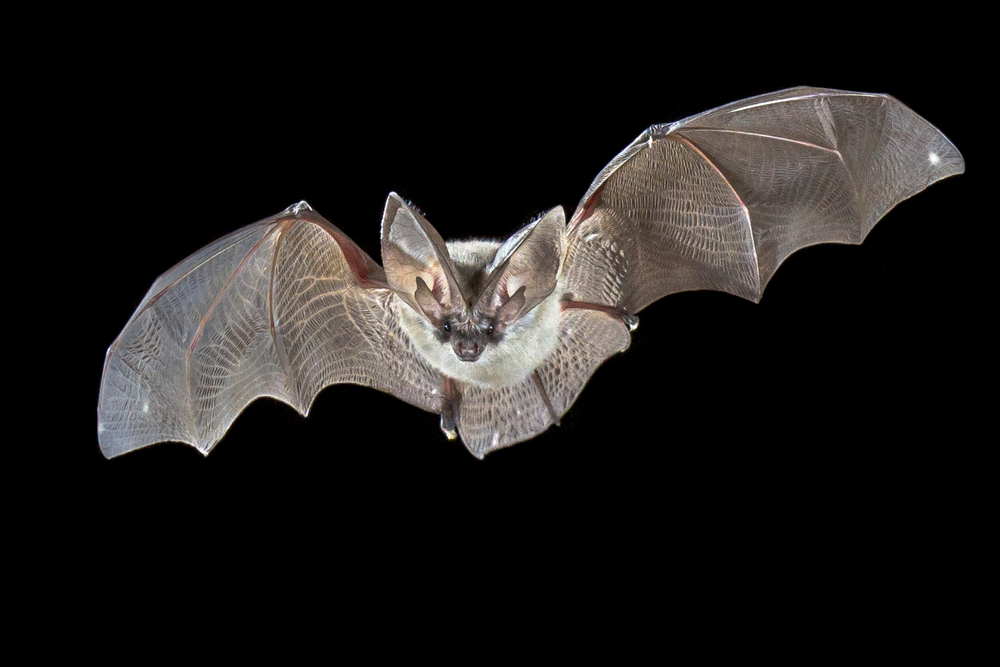
Identifying Characteristics and Facts
- Hibernate during the winter.
- Mostly feed on flying insects.
- They stay in caves but are selective in choosing those caves.
- Mostly active during the night hours and spend their day in caves.
- About 3.5 inches in body size and have a wingspan of about 10 – 11 inches.
- Have gray fur that usually gets bleached in summer months.
These types of bats in Ohio usually stay in limestone karst areas. Even though this is their main habitat, you’ll also find this common type of bat in Ohio in other areas.
Gray bats have interesting behavior, just like some other bats. You may not see them during the daytime since they usually rest and sleep in their caves. They are extremely selective when it comes to choosing the caves that they stay in.
In regards to their diet, these bats feed mostly on flying insects. More specifically, the insects that fly above reservoirs or river streams are what they eat. In addition to that, you also need to know that these bats hibernate and you may not see them during winter.
#5. Eastern Red Bat (Lasiurus borealis)

Identifying Characteristics and Facts
- Migrate in flocks for hibernation during winter.
- Usually hangs in dense foliage trees high above the ground.
- They usually eat beetles and moths.
- About 3 inches in body length and has a 13-inch wingspan.
- Mostly inhabit places such as the edges of pastures and croplands.
- Solitary except when migrating and mating.
- They have a reddish-orange coating.
The Eastern Red Bat (Lasiurus borealis) is another common type of bat in Ohio and surrounding areas. It is also present in many parts of the world.
Learning about this bat is something you’ll find amazing. These bats are always solitary except for the times they are mating.
Another thing about their behavior is that during the daytime, you will spot them hanging in dense foliage trees that are high above the ground. In addition to that, they usually migrate and hibernate during the winter months.
#6. Hoary Bat (Lasiurus cinereus)
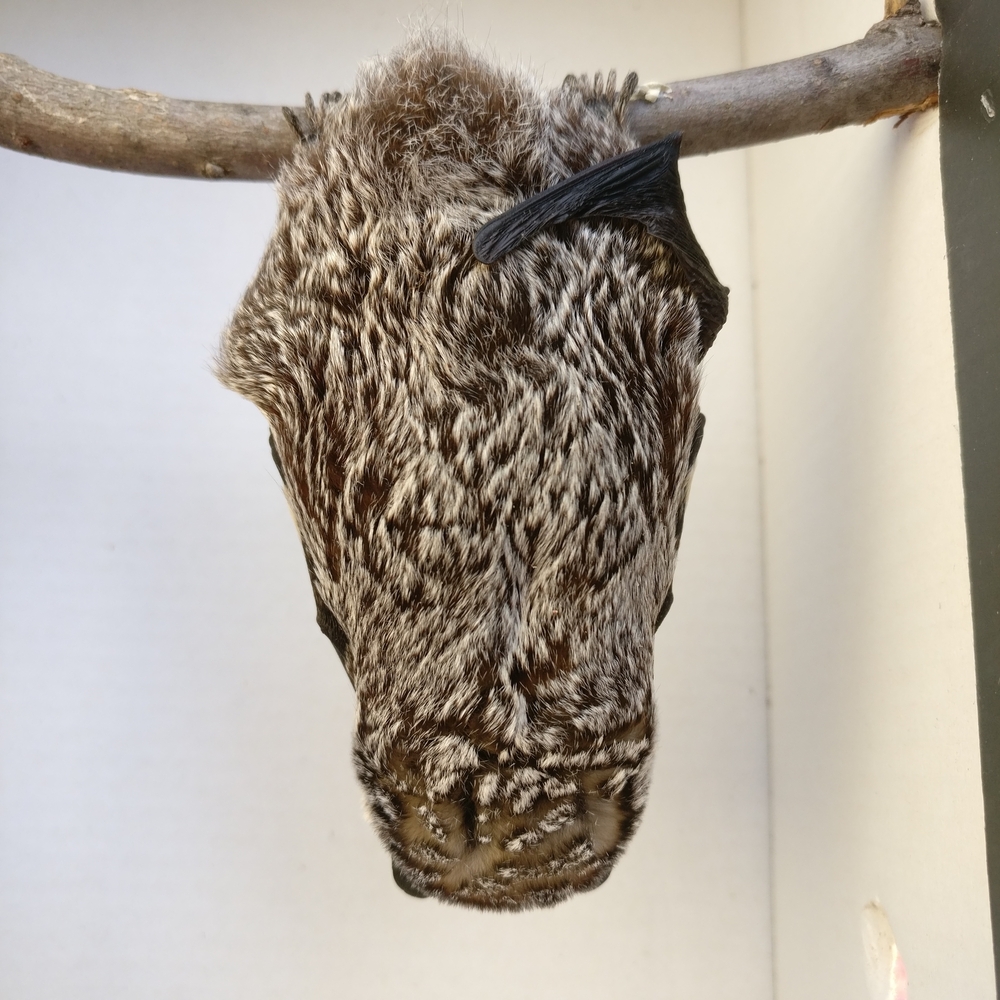
Identifying Characteristics and Facts
- Active foragers during dusk and dawn hours.
- Eats insects like beetles and moths.
- Territorial and usually inhabit forested areas and also croplands.
- About 13 – 15 cm in body length, and with a wingspan of 43 cm.
- Have long and narrow wings with soft fur.
- They are dark brown to black.
You cannot talk about the types of bats in Ohio without including the hoary bat. This is an interesting bat that is highly territorial. You will find them mostly in forested areas and also in the croplands.
When feeding, these bats usually prefer moths, beetles, tree bugs, and crickets. Interestingly, they do have two foraging times which include dawn and dusk.
In addition to the facts I have mentioned about the hoary bats, they also do long-distance hunting in search of large insects. They have relatively high speed and that helps them when pursuing their prey.
#7. Evening Bat (Nycticeius humeralis)

Identifying Characteristics and Facts
- About 34 – 38 mm in body length.
- Dark brown with a brighter belly.
- Small black ears and wings.
- Has a dog-like broad face.
- Nocturnal and they usually roost during the day in trees, buildings, and cavities.
- Can fly for a long while searching for food, mainly insects.
- Migrates for long distances especially during winter.
The evening bat is a common type of bat in Ohio. It is a fairly distributed animal that you will also see in many other parts other than Ohio.
When it comes to features, this bat is amazing and interesting to watch. Of course, they are also easy to identify. They are small and with brown coloration but have some brighter fur on its belly.
Another interesting thing about this bat is its behavior. It is nocturnal and that means you may only see them at night, and during the day, they usually roost in the buildings, cavities, and in the trees.
#8. Tricolored Bat (Perimyotis subflavus)
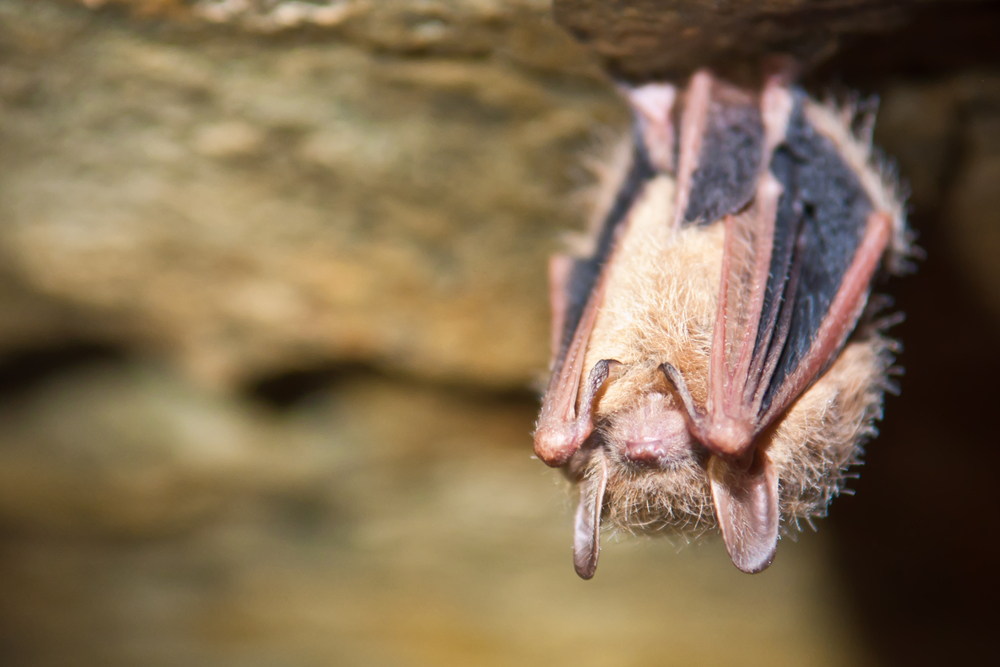
Identifying Characteristics and Facts
- They have 34 teeth.
- About 3 – 3.5 inches in body length.
- Have a wingspan of between 21 and 26 cm long.
- Has three coloration patterns, including black fur, a lighter brown band, and dark tips.
- Normally roost under trees during the daytime.
- They are solitary and feed mainly on small insects.
- They usually use their echolocation calls to catch their prey.
The tricolored bat is unique in its way. The name is due to the coloration that marks its body. It has black fur that marks the base, a lighter brown band, and dark tips.
The habitat for these bats, like those of most others includes the woodlands, forests, and open fields. Of course, they are also present in terrestrial habitats. You will see them roosting in the trees during the day, and at dusk, they start foraging.
In regards to their diet, these bats eat insects like beetles, mosquitoes, and cicadas. They usually use their echolocation to catch them.
#9. Little Brown Bat (Myotis lucifugus)

Identifying Characteristics and Facts
- About 3 – 4 inches in body size with 10 inches wingspan.
- Are reddish to dark brown in color.
- Eat insects such as moths and beetles.
- Mostly inhabit forested areas but hibernate in caves during winter.
- Use echolocation to locate their food when in the dark.
The little brown bat as the name gives it is a small brown bat that is among the common types of bats in Ohio. These bats are also present in many other regions of the world.
Identifying these bats is something you can easily tell without any difficulty. Even though they are incredibly easy to identify there are many interesting features and facts about them.
Little brown bats have a wingspan of about 10 inches and a body length of about 3 inches. The most common and dominant color of this bat is a reddish-brown color. They are social and insectivorous. In addition to that, they use the echolocation feature that they have to locate food when in the dark.
#10. Northern Long-Eared Bat (Myotis septentrionalis)
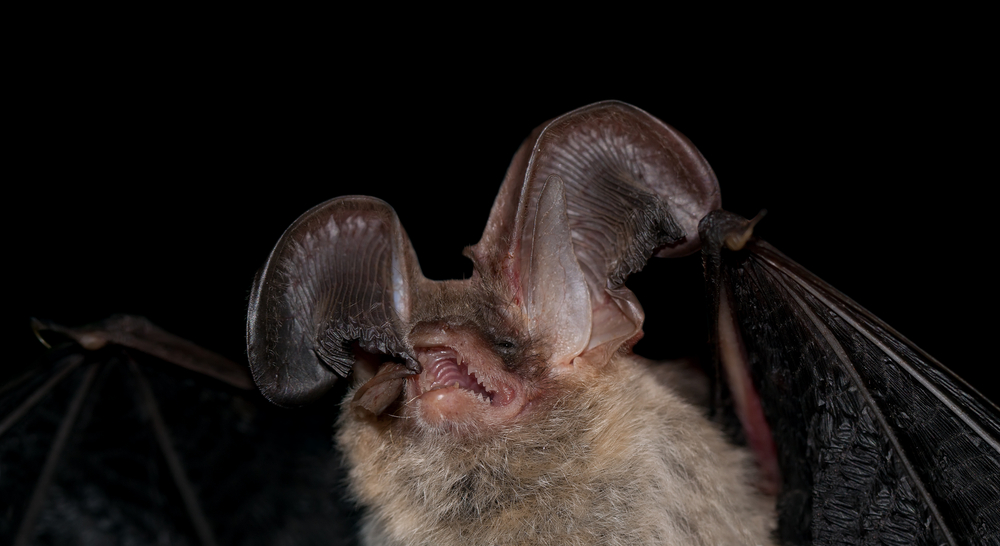
Identifying Characteristics and Facts
- Have a wingspan of between 9 – 10 inches.
- Body size is about 3 – 3.7 inches.
- Marked by long and dark-brown ears.
- Light brown to dark brown body fur.
- Their bellies are usually pale or lighter than the back.
- Mostly inhabit woodlands and forested areas.
- Usually hibernate during winter.
The Northern long-eared bat is the last on our list. Even though it is last on the list, it is one of the most common types of bat species in Ohio. It is also well-distributed in many regions of the world.
These bats are present in their habitats and you will see them with their long ears roosting on trees or even in the buildings. During winter, you may not come across them since they usually hibernate in caves or in the mines.
Additionally, these bats are social and can live in colonies. Also, they play an important role in controlling the growth of insect populations but also pose great health risks since they can spread some diseases like rabies to humans.
As a reminder, the below factors are common for the most common bats in Ohio:
- Size, wingspan, and color are common ways to identify squirrel
- Behavior and Diet are ways to determine the type of bat and its role in its environment
- Almost all bats are nocturnal and many feed at dawn and dusk
- Bats face numerous ecological challenges